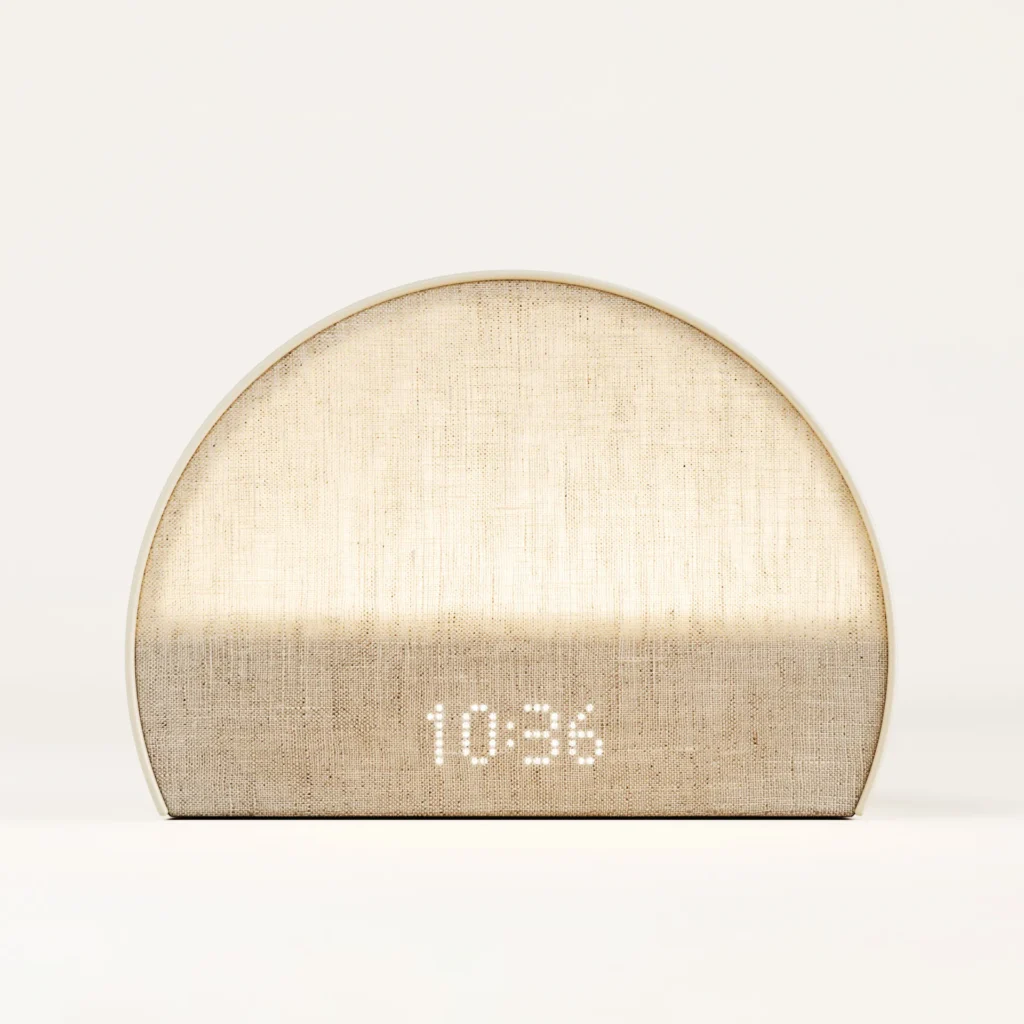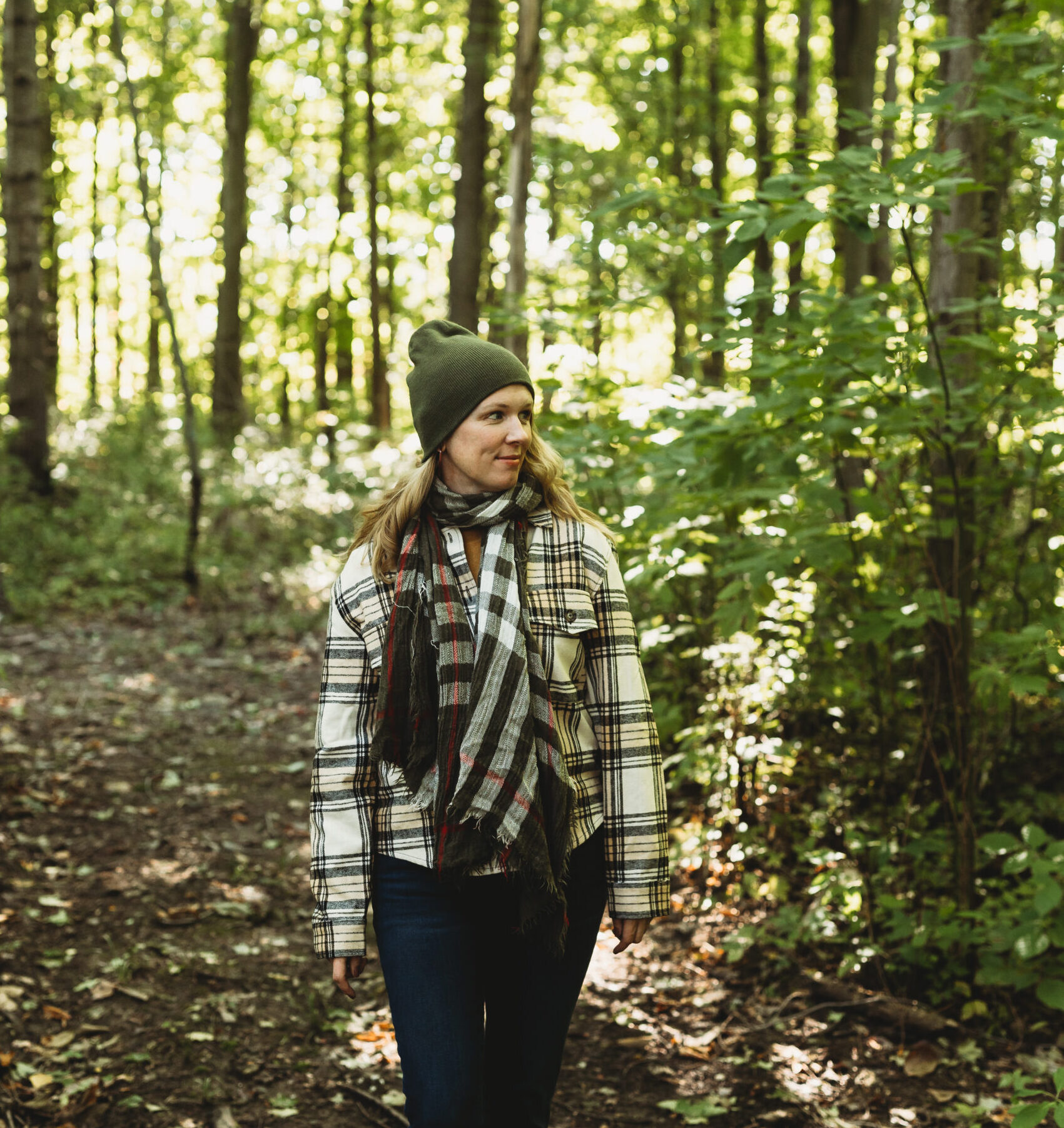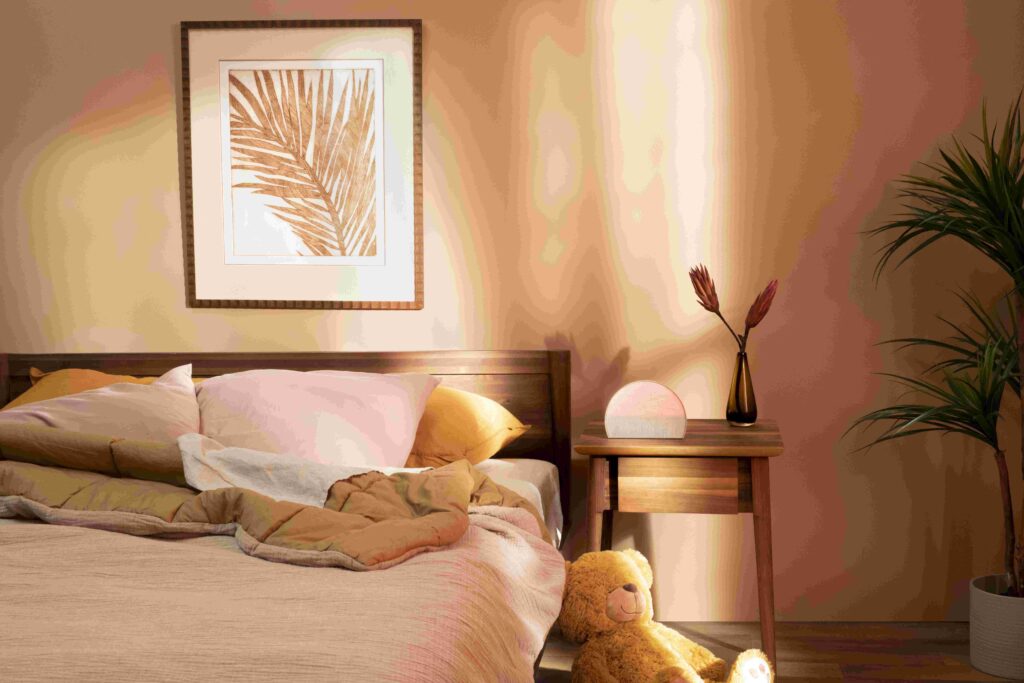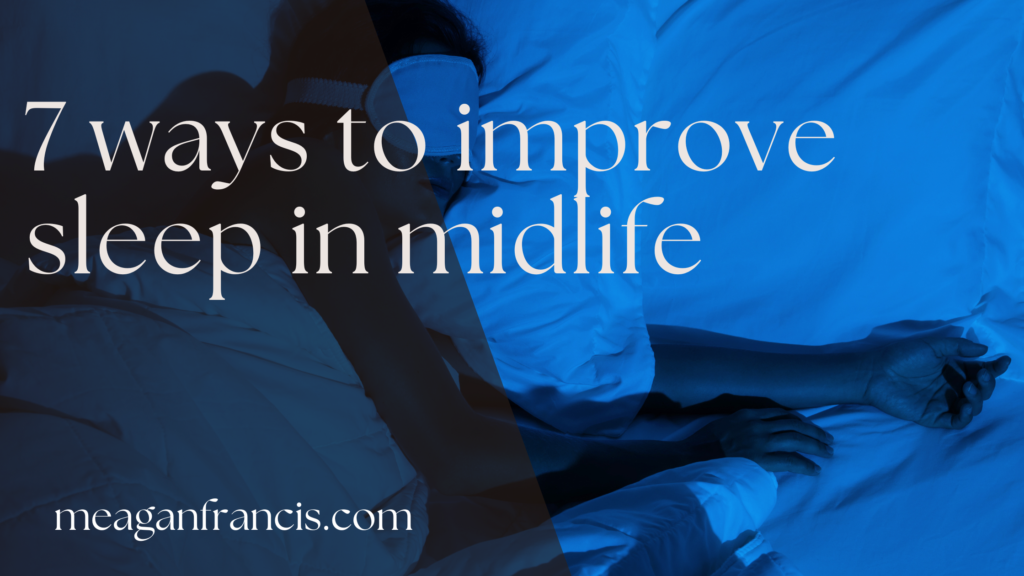For midlife women, a good night’s sleep can feel like a moving target. In perimenopause, which typically begins in the early-to-mid-40s, hormonal shifts can disrupt sleep in a variety of ways, just as other changes, like parenting teenagers or caring for aging parents, are often bringing new kinds of anxieties into our lives – the kind you lie awake at night worrying over.
But though it can seem elusive, midlife is a time when we need solid, healing sleep more than ever. Our immune systems, stress responses, cognitive abilities, memory, mood, emotions, hunger regulation, and more all depend on us getting enough restorative, system-repairing sleep. If needed, it’s worth making major shifts in our lifestyles, surroundings, and obligations to get it!
For myself, the stressors of going through a divorce, parenting teenagers and young adults, and facing new career and financial pressures really made my early-40s-sleep a disaster, but I’ve gotten it under control and wake up most days feeling rested and ready.
Here are some things that have worked for me, from sunrise to shut-eye, and a little of the science behind why they may work for you.
7 Ways To Improve Your Midlife Sleep

Use a sunrise alarm clock.
A sunrise alarm, or “wake-up light”, slowly and gradually fills your bedroom with light in the morning, creating a slow transition to wakefulness. Not only is this a much gentler way to wake than a blaring alarm in a pitch-dark room, but research indicates that exposure to gradually-increasing light can help regulate hormone production to improve sleep quality. I’ve been using a sunrise alarm for years and it has been a morning game-changer, turning me from someone who struggled pretty much my whole life to drag myself out of bed before 10 AM, to a much-earlier-bird version of myself, happily awake and alert by 6:30 most mornings. I’ve tried a few different sunrise alarm clocks, and my current favorite is the Restore 2 from Hatch (get $20 off using my link!)
Get outside every day (including early in the day.)
Multiple studies have shown a connection between spending time in nature (parks, forests, your own backyard) and quality sleep. And in particular, exposure to early morning sunlight has been shown to help regulate your body’s internal clock, because natural light helps to suppress the sleep-regulating hormone melatonin during the day, which helps us feel alert during the day and more able to wind down at night.
I aim to spend some time outdoors every day, with regular outdoor walks even in winter, and try to get at least some of that outdoor time in the morning. A note that it doesn’t all have to happen at once. I often “putter” outside a little in the morning, or may even enjoy my morning cup of tea on a sunny patio in the spring and summer, but not actually take my walk until later in the day. The key for me is to not overthink this part, but simply to get outside as much as I can. I find that the more I make the outdoors a part of my life, in big and small ways, the better I feel and the better I sleep.

Move – a lot – throughout the day.
Multiple studies show a connection between exercise and sleep quality, but I don’t think this will surprise anyone who has personally experienced the connection between physical activity and the ability to fall asleep and stay that way. Long outdoor walks, strength-training, yoga…they all help me sleep better at night, and the more I move, the better I sleep.
Additionally, the more I move the more I want to move, and the less I move, the less I want to move. If you’re stuck in that latter downward spiral, I’d love to encourage you to find some small way to start moving every day, even if it’s as simple as a ten-minute walk. When I’ve found myself in those funks, starting to move again seems to the only way to climb back up the spiral, and at some point the desire for more and more movement seems to take on a momentum of its own.
I also think it’s really important that we don’t over-think movement. We don’t always have to be wearing sneakers, exercise apparel, and a sports bra to get some healthy activity in. I will sometimes do an entire workout in regular clothes – or in bare feet, pajamas, and no bra (!!) – just to remind my body that it’s possible to move in whatever I happen to be wearing. Also, there are huge metabolic benefits to movement that isn’t necessarily strenuous exercise, due to “non-exercise activity thermogenesis,” or NEAT. This refers to the energy expended doing things like walking, standing, or fidgeting, and research shows it can have an important impact on our health and sleep quality.
Avoid alcohol close to bedtime.
One of the biggest midlife realities many of us experience is that we can no longer tolerate alcohol the way we once may have been able to. Let’s face it, over-indulging was never good for me, even though my 20-and 30something body may have seemed mostly impervious to abuse. But the aging process has a way of settling old scores, and we start really feeling the effects of stuff that was never good for us to begin with. (I personally think this is a good thing, but that’s a topic for another article!)
Multiple research studies link the intake of alcohol with lower sleep quality, and this is especially true when you drink it later in the evening. I find that I sleep best when I don’t drink at all, or cut myself off at least two hours before bed, which for me is about 9 PM on weeknights. (Note: there is a growing body of work that suggests most women would be best served by completely abstaining or strictly limiting alcohol intake. My goal is always to find manageable and small ways to start moving toward healthier habits, and for me, an early-evening cutoff really helped.)
For me, abstaining close to bedtime has meant reframing a “bedtime” glass of wine to something more akin to happy hour. Creating a regular practice of switching from wine to herbal tea at 7 PM not only gave me much better sleep, but also had an immediate limiting effect on my intake since, without an end point in mind, I could easily sip, sip, sip all evening long – and that often led to me pushing off bedtime and perpetuating unhealthy sleep cycles.
And that leads me to…
Choose the right bedtime.
There’s some interesting research out there about chronotypes and how they may affect our sleep preferences and patterns. But what seems like your natural proclivity toward “night owl” or “early bird” sleep patterns may not actually be so innate. There are a whole bunch of factors in our modern lifestyles (and in the realities of being a mom, wife, worker, etc) that can confuse the signals nature is trying to send us.
For years, I was convinced I was an ultra-night-owl by nature, which allowed me to cram in lots of productivity and a fair amount of frivolity in the wee hours. Looking back, I believe I was actually “powering through” what should have been my bedtime with a mixture of electronic stimulation and, often, sugar or alcohol, then hitting a second wind that allowed me to stay up late. (Of course, I often felt crappy the next day.) My body doesn’t allow me to do that anymore, and I don’t think that’s a bad thing!
Our culture tends to glorify extremes, either the idea of a “5 AM club” or burning the midnight oil to get it all done. In reality, most of us probably do best with a less remarkable sleep schedule. According to chronotype research, the “bear” type, whose sleep patterns follow the rising and setting of the sun, make up 55% of the population whereas late-sleeping “wolves” only make up 15% of the population – the same percentage as the true early-bird “lion.”
It took me some experimenting and setting myself free from old patterns to figure out my true ideal sleep pattern, but – at least in midlife – I no longer consider myself a wolf. In general I feel best when I’m winding down by 9, in bed reading by 9:30, and asleep by 10:15. This shifts a bit in the dead of winter, when I crave a somewhat earlier bedtime, and the middle of summer, when I need a little less sleep. But overall it’s the rule of thumb I follow now.
If you aren’t sure what your ideal bedtime is, you might try eliminating snacking, alcohol, anxiety-inducing media or conversations, and screens after 5 or 6 PM for a few days and see what happens!
Create a soothing bedtime routine.
By far, the nights when I sleep best are those where I engage in an intentional and mindful bedtime routine that includes gentle movement and breathing, a warm bath, facial massage, a cup of sleep-supporting herbal tea and time spent quietly reading. On the nights when I can’t do the whole shebang, I at least aim for an abbreviated version. Soon I’ll write up my whole bedtime routine in a separate post – it’s become a enjoyable, treasured ritual that I look forward to.
Craft the right sleeping environment.
There’s a lot that goes into building the ‘perfect’ sleep environment – here are a few things that are relatively easy to control and make a big difference to me:
Temperature, light, and background noise. Research indicates that a cool, dark room is best for sleep, so I keep my temperature set to no more than 65 degrees F. I personally don’t care for any background noise at all unless it is the very faintest of white noise, but on nights when there is a lot of wind outside or other noises that are hard to tune out, a bedroom fan comes in handy. I have also used my Hatch Restore to create sleep-friendly white noise to fall asleep to if I’m in a place with a lot of traffic noise (yes, I travel with it!). I also appreciate that the Restore has a sleep mode that allows me to completely darken the display so even those gently glowing numbers don’t disrupt my Zzz’s.
The right pillow. As a side sleeper, finding the perfect pillow was quite a quest. After developing some chronic neck and shoulder pain last summer after a week-long vacation where I slept on a variety of saggy mattresses and sad, hard pillows, it turned to a quest. Eric did a bunch of research and bought me a Coop pillow based on the reviews he found, and it was truly a game-changer. Within a few days of using it my neck pain disappeared, so I bought two more plus a travel version. It’s just the right combination of super-soft and squishy feeling, but with plenty of support, and it’s cool to the touch. Plus, you can easily adjust the firmness and support level by removing or adding more filling.
The ideas above have been helpful for me, but may not all be practical for you – especially not if you try to do them all at once. That’s totally okay! I’ve developed most of the above practices slowly over years, not days, and I’m not perfect about any of them either. If you know your sleep could use some improvement, I’d suggest starting first with something small and easy to implement, like trying a sunrise alarm clock or taking a 15-minute walk every morning. Over time, you’ll feel the benefits – which will mean more energy to establish new habits. Sweet dreams!

